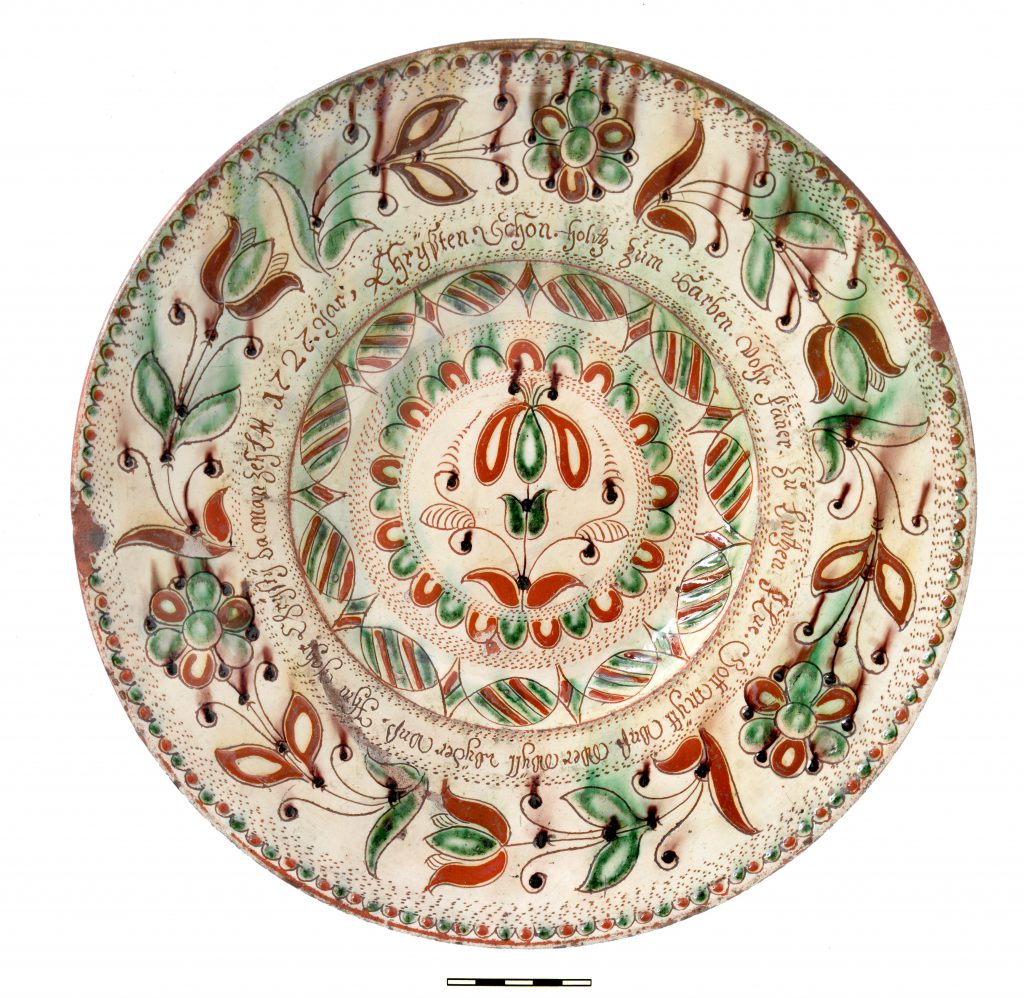
Langnau in the Emmental valley, Canton of Bern, plate with chattered, incised and slip-trailed decoration, dated 1727. The use of a plain white undercoat gives a reddish sheen to the motifs and dots of the chattering.
“Chattering”, popular in the German-speaking part of Switzerland and throughout north-western Germany and Scandinavia, was one of a range of decorative techniques where clay was removed or displaced from the surface of the vessel. However, it was known and used long before that by the ancient Greeks and Romans and is still used in India and Japan today (“tobikanna”). Because of how the decoration is produced, it can also be called “pecking”, while the English term “chattering” is obviously derived from the noise the tool makes during the manufacturing process. In the context of Swiss Heimberg-type pottery, the decoration is called “Hämmerband” (Heege 2019a; Heege 2019b with further references).
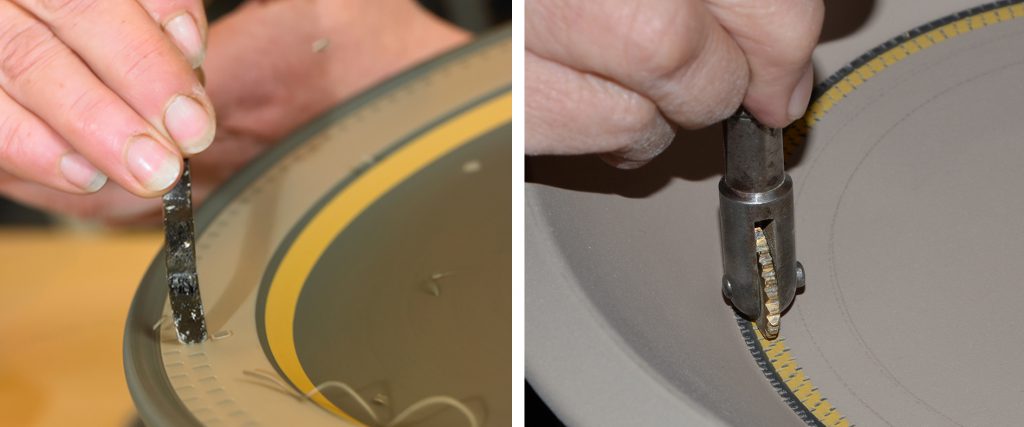
Chattered decoration being produced in Røros, southern Norway (left), and at the workshop of Ulrich Kohler in Schüpbach, Canton of Bern (right). In both cases, there is a dark slip beneath the white-firing slip, so that the dark undercoat becomes visible through the chattered holes after glazing.
The decoration can be used on slipped or unslipped vessels and is usually combined with other decorative techniques.
There are at least two ways of achieving the effect. One is to use a springy metal blade with a bent, sharp-edged end that can be pointed or can vary in width. The tool is pressed lightly against the ceramic object that is placed on a rotating potter’s wheel, the rotation causing the blade to judder over the surface of the vessel in a repetitive springy motion. Depending on the dryness of the clay or slip, round to oval depressions of different sizes are made in the slip or vessel surface, which tend to appear “dark” beneath the glaze. In this way, circles or spirals of notches are formed.
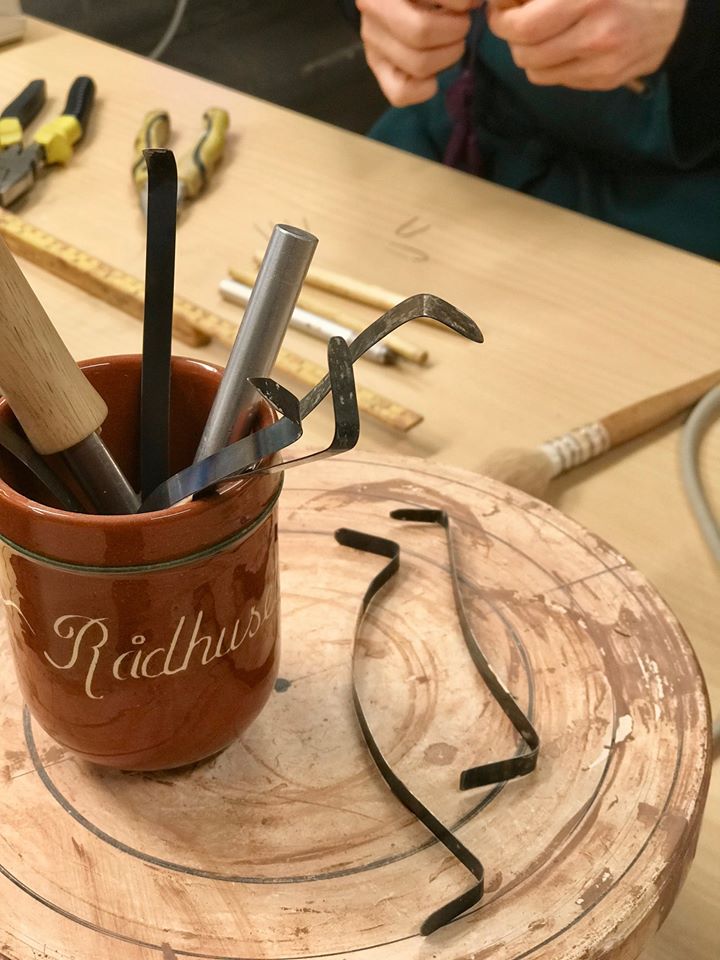
Modern chattering tools at the Potteriet Røros workshop in southern Norway, 2019 (photograph courtesy of Potteriet Røros).
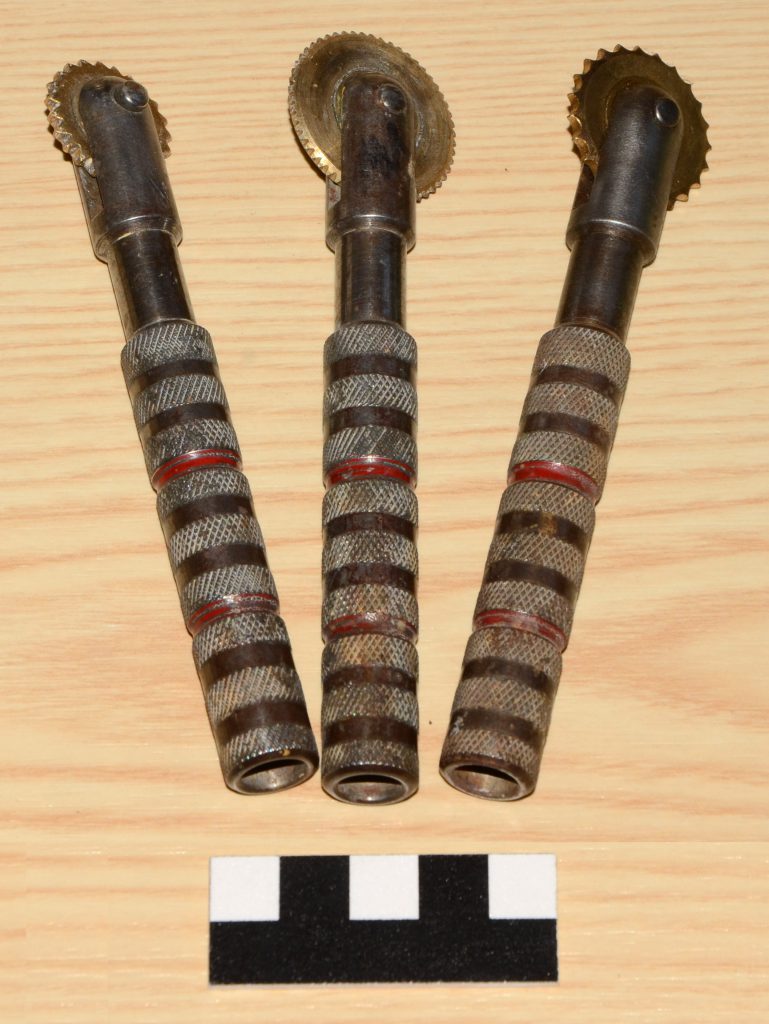
Roulettes (“Rouleau”) from the first half of the 20th century. These were used at the Kohler workshop in Schüpbach, Canton of Bern, to create “chattered decoration”.
The same effect can be achieved using a roulette, a metal wheel revolving around a pin attached to a handle. Once a vessel is glazed, there is no discernible difference between a chattered piece and a vessel decorated with a roulette. From a technical point of view, however, “chattered decoration” created using this method should be classified as rouletted decoration.
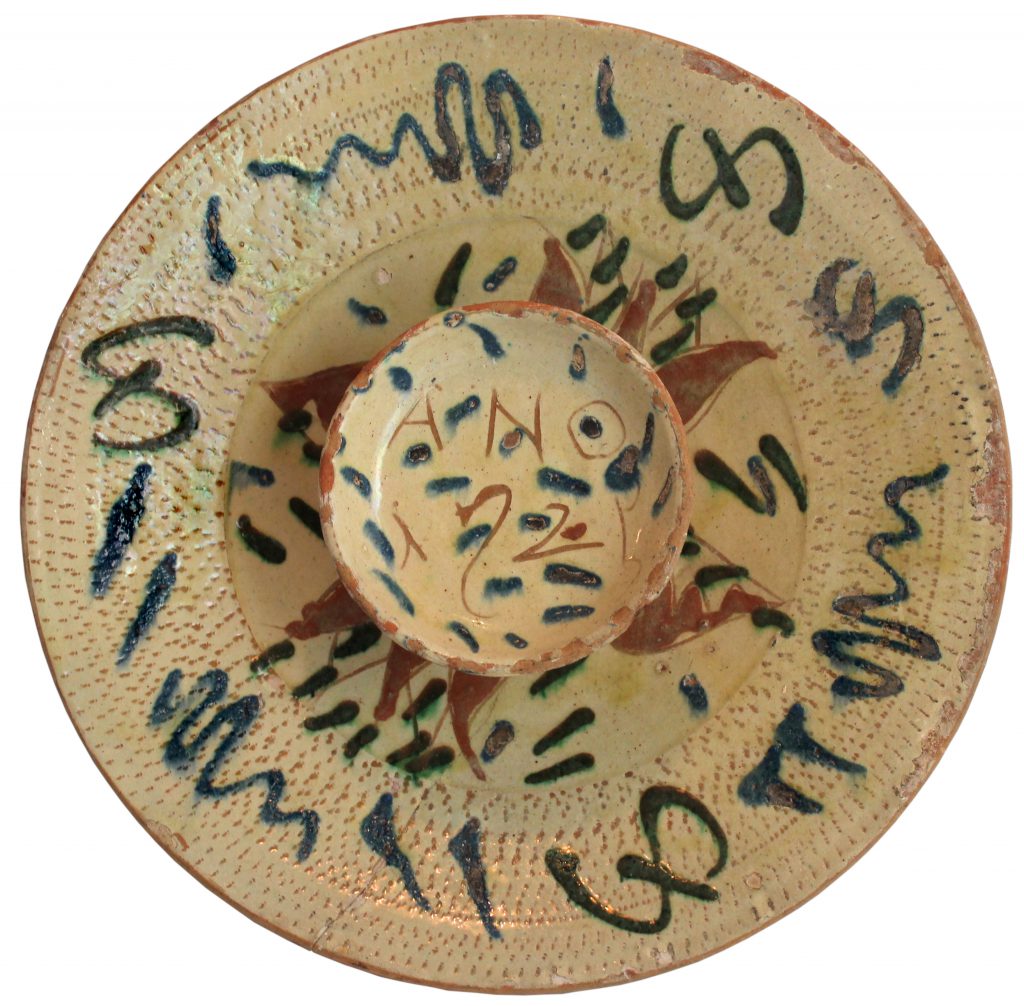
Fish plate from Schleswig-Holstein (Ehlers 1967, 82), photograph by Frauke Witte, Haderslev (SOC).
Modern-era chattered decoration was developed in Mecklenburg or Sweden around 1600. The oldest dated pottery with chattered decoration was recovered from the “Vasa”, a battleship which sank in 1628. Over the course of the 17th and early 18th centuries, the technique spread throughout all of Scandinavia, Poland, Czechia, Germany, Austria, Liechtenstein and Switzerland. It is therefore no surprise that the technique was then brought to the US by emigrating German or Swiss potters and subsequently began to appear on Pennsylvanian pottery.
Nowadays, very few European workshops still use the technique in traditional pottery production. One of them is in Røros in southern Norway. In Scandinavia, the technique is known as “hemring” or “hammerkrok”.
Translation Sandy Haemmerle
German: Springfederdekor
French: décor guilloché, guilloché à la roulette dentelée
References:
Barber 1903
Edwin Atlee Barber, Tulip ware of the Pennsylvania-German Potters. An historical Sketch of the Art of Slip-Decoration in the United States (Neuauflage 1970), New York 1903.
Blondel 2001
Nicole Blondel, Céramique, vocabulaire technique, Paris 2014, 204.
Ehlers 1967
Louis Ehlers, Dansk Lertøj, København 1967.
Heege 2019
Andreas Heege, Springfederdekor – Chattering – Décor guilloché – Hemrad dekor. The history and development of a decorative technique found on 17th- to 19th century earthenware ceramics from Scandinavia, Poland, Germany, Switzerland, Austria and Liechtenstein, in: Europa postmedievalis 1, 2019, 1-12.
Heege 2019
Andreas Heege, Springfederdekor – Zur Entstehung einer speziellen Dekortechnik im deutschen Sprachraum, in: Hans-Georg Stephan, Keramik in Norddeutschland. Beiträge des 48. Internationalen Symposiums für Keramikforschung (Hallesche Beiträge zur Archäologie des Mittelalters 3), Langenweissbach 2019, 84-99.

